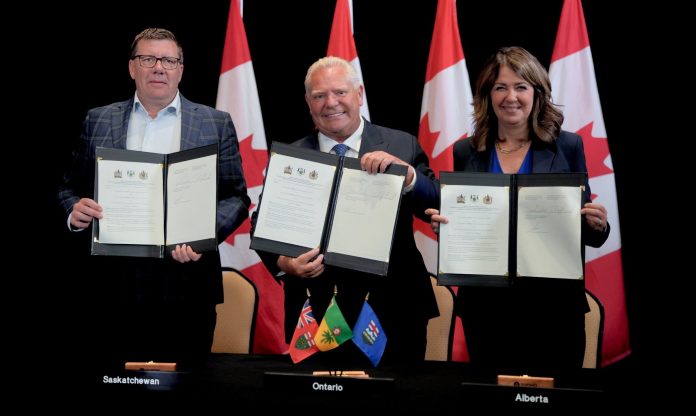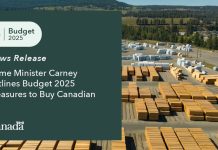Canadian Design and Construction Report staff writer
A set of new agreements signed by provincial and territorial leaders this week aims to open the door for expanded pipeline and rail infrastructure, with the goal of reducing trade barriers and strengthening domestic supply chains.
While much of the public focus has been on labour mobility and interprovincial trade, Ontario Premier Doug Ford and other premiers used the Council of the Federation meetings in Huntsville, Ontario to push for the construction of new trade corridors — including pipelines, rail lines, and a potential deep-sea port in James Bay.
“We’re helping Canada unlock up to $200 billion in economic potential,” Ford said, calling for urgent investment in critical infrastructure that would move energy, minerals and goods across provinces and to international markets.
Ontario has signed two memorandums of understanding — one with British Columbia and another with Nunavut, Yukon and the Northwest Territories — focused on reducing regulatory hurdles and allowing skilled workers to move more easily across provincial and territorial lines. But behind those agreements is a broader effort to lay the groundwork for major capital projects.
In a separate agreement with Alberta and Saskatchewan, Ontario committed to exploring new pipelines to transport western oil to southern Ontario refineries using Ontario steel, expanded rail capacity to ship critical minerals west, and a potential shipping corridor via the Ring of Fire and James Bay.
Premiers say the aim is to reduce reliance on U.S. markets and create more resilient, east-west and north-south trade routes within Canada.
British Columbia Premier David Eby noted that when the country’s largest provinces coordinate efforts, the economic payoff is significant — particularly for the construction industry.
“When Ontario and B.C. team up to knock down trade barriers, it’s good for workers, it’s good for businesses and it’s good for the people of both provinces,” he said.
Northern leaders also backed the push for improved infrastructure, calling it essential for long-term economic development.
“For the North to reach its full economic potential, we need to reduce the barriers that make it harder for our people and businesses to connect with the rest of the country — and for them to connect with us,” said Northwest Territories Premier R.J. Simpson.
Yukon Premier Ranj Pillai added that the new agreements can help unlock access to untapped resources in the North, saying: “This is about making it easier for people, goods and ideas to move across the country.”
Ontario has now signed interprovincial trade MOUs with 10 of 12 other jurisdictions, and remains the only province or territory to have eliminated all party-specific exceptions under the Canadian Free Trade Agreement.
The province also recently passed the Protect Ontario Through Free Trade Within Canada Act, giving it more tools to facilitate commerce across borders and withstand future trade shocks — including possible tariffs from the United States.
Premier P.J. Akeeagok of Nunavut said the northern agreement “positions Nunavut to be a more connected and competitive player in Canada’s economy.”





